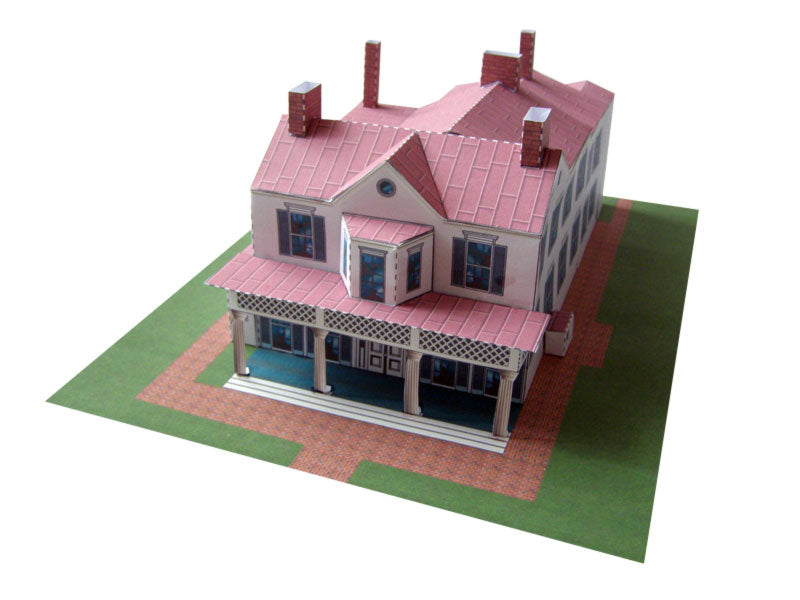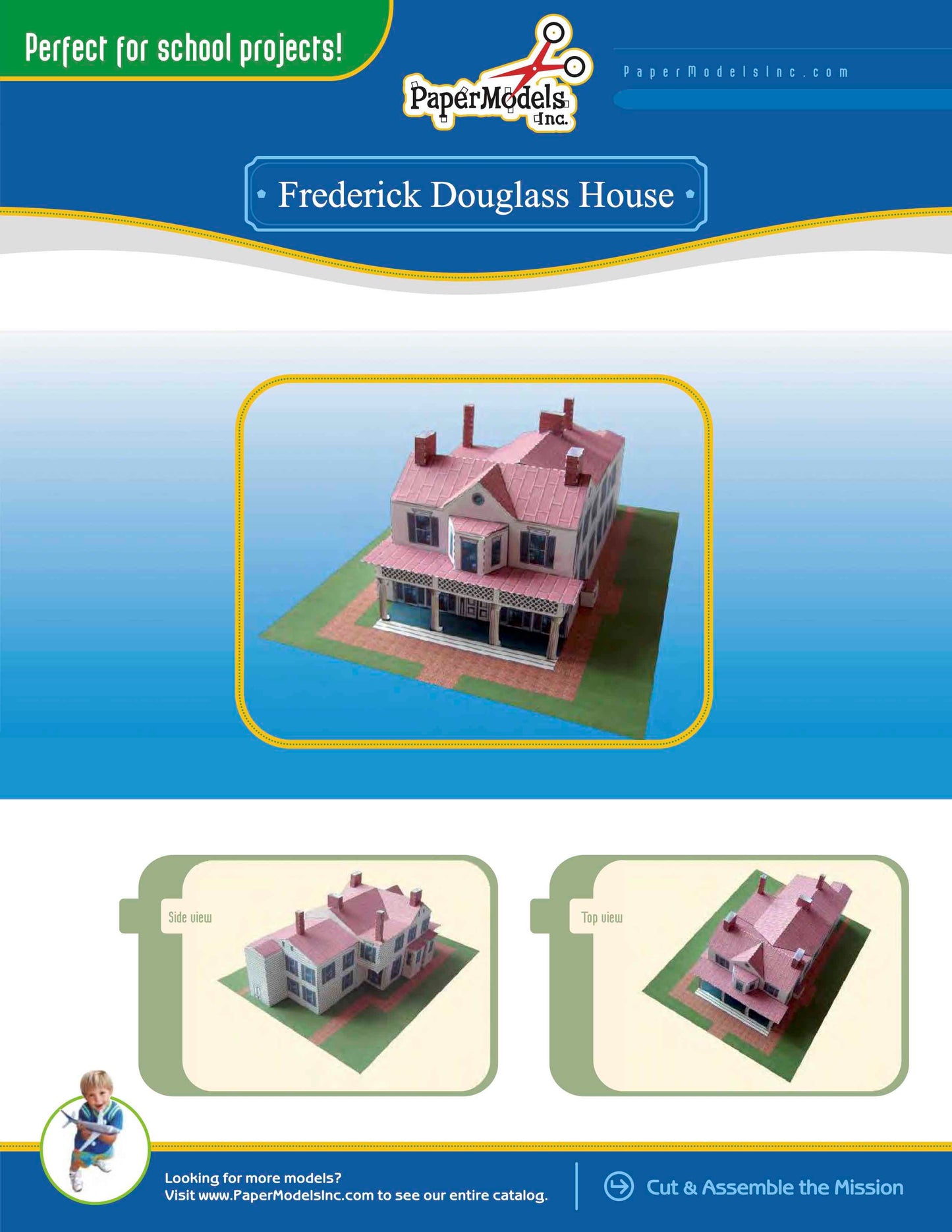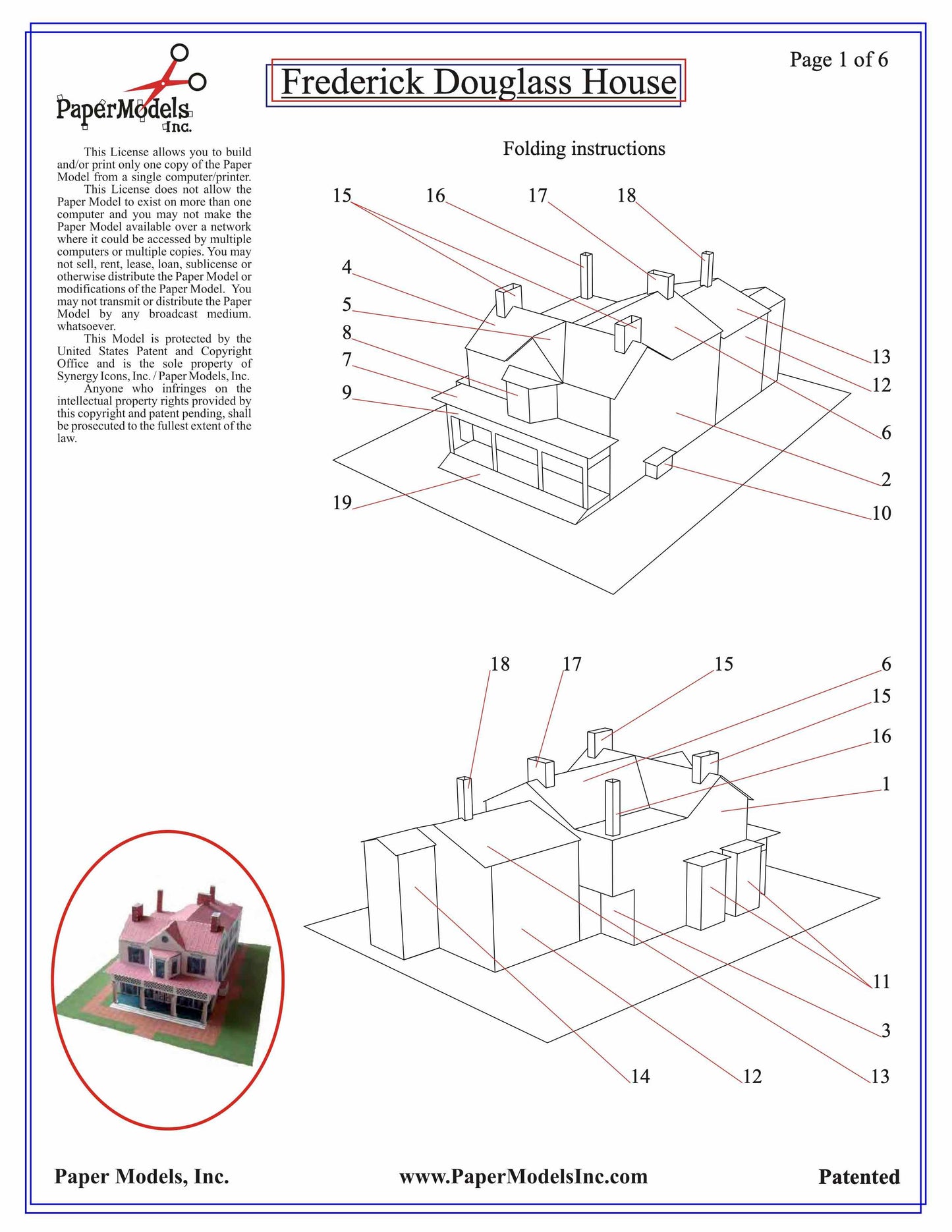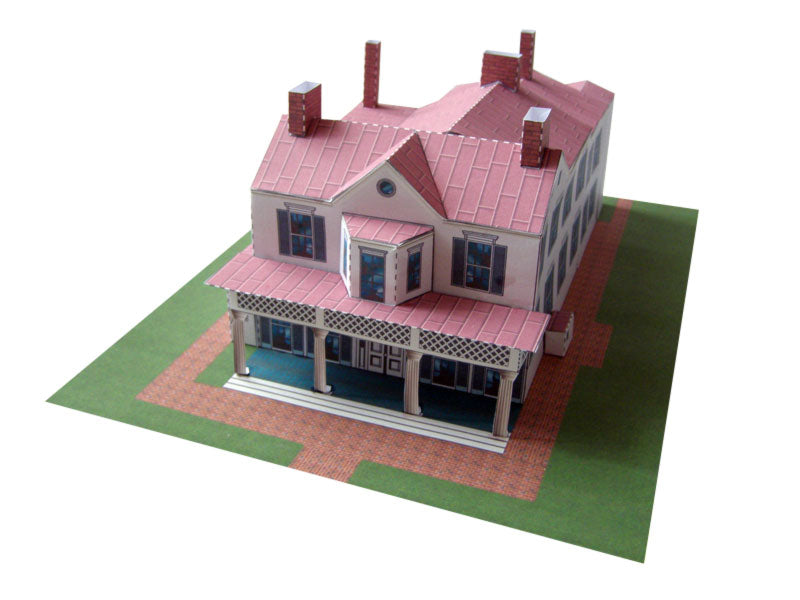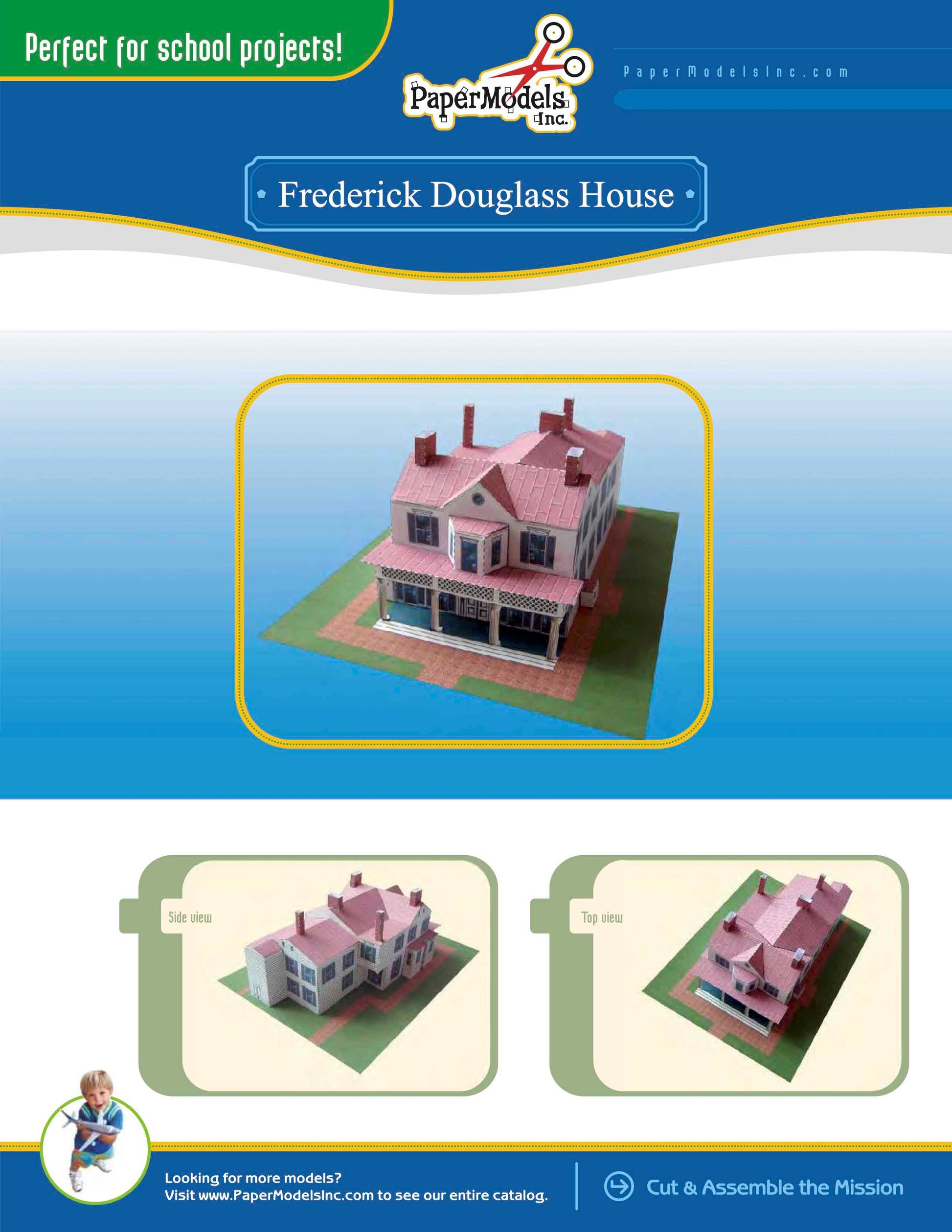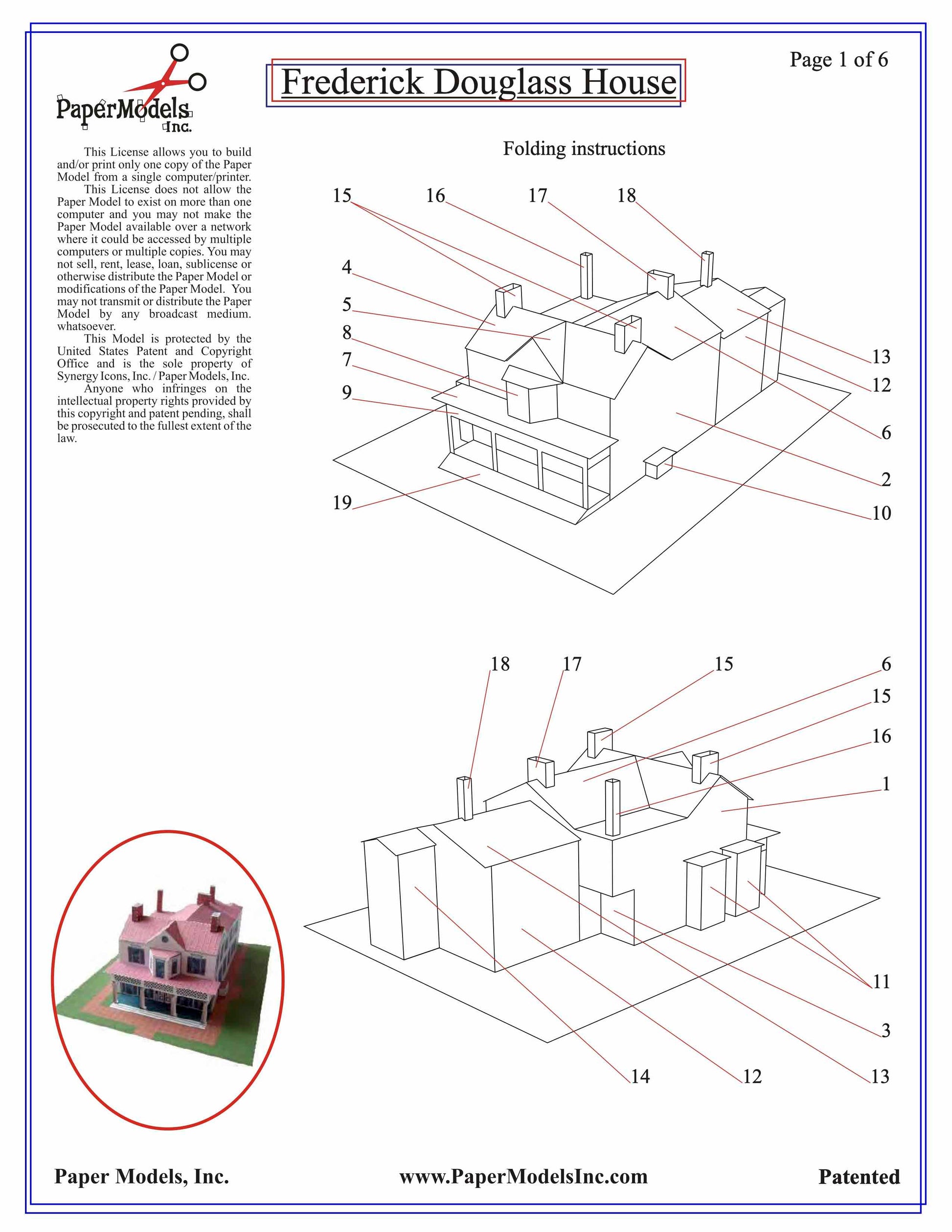Frederick Douglass Home - Washington, D.C. - Paper Model Project Kit
Frederick Douglass Home - Washington, D.C. - Paper Model Project Kit
No se pudo cargar la disponibilidad de retiro
🌟 Welcome to Paper Models Online – Your Shortcut to Academic Excellence! 🌟
Are you tired of stressing over last-minute school projects? Look no further! Paper Models Online is here to make your academic life a breeze.
🚀 Why Choose Us?
At Paper Models Online, we understand the pressure of looming deadlines and the desire for that coveted "A" grade. That's why we've crafted the perfect solution for you! Whether you're a student aiming for extra credit, a parent looking for quality time with your kids, or just someone in need of a break from the chaos, our paper models are your ticket to success!
💻 Instant PDF Download OR Pre-Printed & Shipped
You're in control! Choose from our instant PDF download, starting at just $9.95 for the 7"x10" size or $11.95 for the 10"x13" size.
Print it on your home or office printer using regular paper, or opt for the hassle-free pre-printed option. We'll ship it directly to your doorstep for a flat $5 fee via USPS First-Class Parcel, ensuring you get it in 1-3 days!
✂️ Easy Assembly, Maximum Impact
With just a pair of scissors, some glue, and an hour of your time, you can turn these paper sheets into stunning three-dimensional architectural replicas or complete science projects. The images on our website are real models made from our kits, and we even provide a history to help you craft an impressive report.
🎨 Unleash Your Creativity
Not into mission kits? No worries! Our models double as templates for your creative genius. Paint, trace, adjust sizes—your imagination is the only limit! Create a custom masterpiece that reflects your unique style and personality.
🛒 The Buying Process Made Simple
- Choose Your Size: 7"x10" or 10"x13"
- Choose Your Delivery: Instant PDF download or pre-printed and shipped
- Purchase Your Model: It's that easy!

📦 Typical Kit Sample
Each kit includes 8 to 18 pages, providing everything you need to bring the model to life. An "exploded view" guides you through assembly, and a complimentary history adds that extra touch for your report. Impress your teacher not just with creativity but also with your research skills!
Don't let deadlines stress you out. Choose Paper Models Online for your next school project, and let us be Your Best Way To Get An "A"!
 |
 |
 |
| Exploded View | Sample Pieces | Finished Model |
Free History For Your Report
FREDERICK DOUGLASS' HOME
Frederick Douglass, born Frederick Augustus Washington Bailey on February 14th, 1818, was a famous American slavery-abolitionist and author. Douglass was such a famous and active member of the early-American African-American community, he was given powerful nicknames such as “The Sage of Anacostia” and “The Lion of Anacostia” (Anacostia being a historical neighborhood in Washington, D.C.). A vicious opponent to slavery, Douglass was actually born into the world of slavery along the Maryland coastline, and separated from his mother while only an infant. Rumors abounded as to who his father was; many scholars believe his father was the white owner of the slaves; others have claimed that his father was an early Muslim-American. At the tender age of six, Douglass was separated from the rest of his family and moved to the Wye House Plantation, a location also operated by his owner, Aaron Anthony. Upon Anthony’s death, Douglass was traded as property among the family, until eventually winding up in Baltimore to be the servant of Hugh Auld. It was here, under the ownership of the Auld family, that Douglass received an early – and illegal – education in the alphabet from Hugh’s wife.
Detailed in Douglass’ first literary work, “Narrative of the Life of Frederick Douglass, An American Slave” (1845), this event led to continual learning of reading and writing by the educated white children of the neighborhood. Outrage sparked when his owner, Hugh Auld, learned of his education by his own wife and the neighborhood children. Auld felt that an educated slave would desire much more, including freedom, and that this was unacceptable. This hate-filled speech would be the first time that Douglass had heard anti- abolitionist words spoken in such a matter, and would become an earmark in the timeframe of his life. At the age of sixteen, for punishment of his education, Auld sold Douglass to the famous “slave-breaker” and “slave-whipper,” Edward Covey. After initial psychological and emotional breakdowns, Douglass confronted Covey and won a fight against him. The whippings stopped.
After an unsuccessful escape attempt from Covey in 1836, Douglass finally did succeed two years later by hopping a train bound for Havre de Grace, Maryland, under the cover of papers and a uniform provided by a free black sailor. Douglass’ escape journey continued over the river and onto another train bound for Delaware, and then by steamboat to Philadelphia, Pennsylvania. He then, in under 24 hours, made it to New York, where British abolitionist-sympathizers paid Covey the fee to officially free Douglass.
The next stop on the road to freedom for Douglass was New Bedford, Massachusetts, where he began socially interacting with other free black citizens in a local church and at anti-abolitionist meetings, eventually giving the first of many famous speeches at an annual convention in Nantucket of The Massachusetts Anti-Slavery Society in 1841. By 1843, Douglass was a featured speaker across The United States on the traveling American Anti-Slavery’s Hundred Conventions project, and also became a signatory of The Declaration of Sentiments at the Seneca Falls Convention. Douglass’ biggest accomplishment came with the publishing of his auto-biography in 1845, even though early critics of the book claimed that it must have been written by an educated white man; doubting that a former slave could use the English language so proficiently. Despite the critics, the book became a bestseller, and Douglass continued to revise and re-release the book as his life and experiences progressed. The most famous black man in the country, Douglass was soon called on to give lectures and speeches in Protestant Churches throughout Ireland and Great Britain, where his fame was met with the same eagerness that he experienced in the States.
During The Civil War, Douglass became one of the most outspoken citizens of the African-American community to claim that slaves should be allowed to be free citizens and help in the war effort for their own freedom. The key event was the signing of the Emancipation Proclamation on December 31st, 1862 by President Lincoln allowed the slaves to be free. Douglass further worked with Lincoln personally on such issues as racial equality and treatment of former slaves. This work with Lincoln led to Douglass’ political career, working on political campaigns for Ulysses S. Grant and Victoria Woodruff. At Lincoln’s memorial service, Douglass was encouraged to give an oral tribute to the assassinated president, after the main speaker’s eulogy proved insufficient.
In 1877, approaching the end of his life, Douglass purchased a fine home in Washington, D.C., along the Anacostia River, named Cedar Hill. His work on the house expanded it to 21 rooms, and the property to 15 acres. On February 20, 1895, Douglass passed away of a heart attack, after returning home from giving a speech that received a standing ovation at a meeting of The National Council of Women. He was buried in Mount Hope Cemetery in New York, far away from his Cedar Hill and adopted city.
Today, Cedar Hill is home to The Frederick Douglas National Historic Site. Today’s visitors can tour the property and recently-renovated home to learn more about the man who helped turn the tide against slavery during the Civil War era. Each room of the sprawling, Victorian-style house is decorated as it was during Douglass’ life, and serves as an authentic example of a man who overcame the odds of a hard life and rough beginning. The house museum also features exhibits that pay tribute to his friendship with other prominent figures in American history, such as President Lincoln and fellow author Harriet Beecher Stow. The property and exhibits in the park are open year round, while the house can be toured by reservation.
© Copyright – Paper Models, Inc. – All Rights Reserved
Share
